I thought I’d write up some first impressions of the Solar SR1.6AMP which I just picked up. I haven’t seen any reviews for this model online at all, so I figured somebody might find this helpful. This is a six-string superstrat with a set-through neck joint (I think? the website also describes it as a through-neck at some points) and Fishman Fluence Modern humbuckers, all topped off with a beautifully garish gold/metallic purple gloss colour scheme. The main selling point of Solars is that they use the Evertune constant-tension bridge across most of their higher-end models. The Evertune is an amazing piece of equipment which, in addition to keeping the guitar in tune, also dramatically improves the intonation in every position on the fretboard. As a result chords are much more pleasant to the ear, especially when playing with distortion. Not only were Solar early and enthusiastic adopters of the Evertune, they also work very hard to keep this very expensive and complicated piece of engineering from impacting the price of the instrument too much. As a result the SR1.6AMP comes in at about half the price of the closest equivalent Evertune/Fishman-equipped Ibanez RG, which is admittedly part of the Japanese-made Premium range but uses a cheaper and less ergonomic bolt-on neck joint.
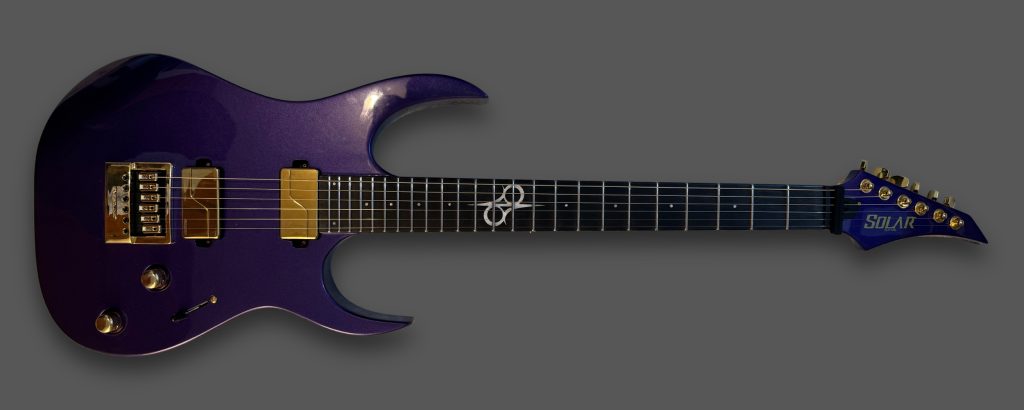
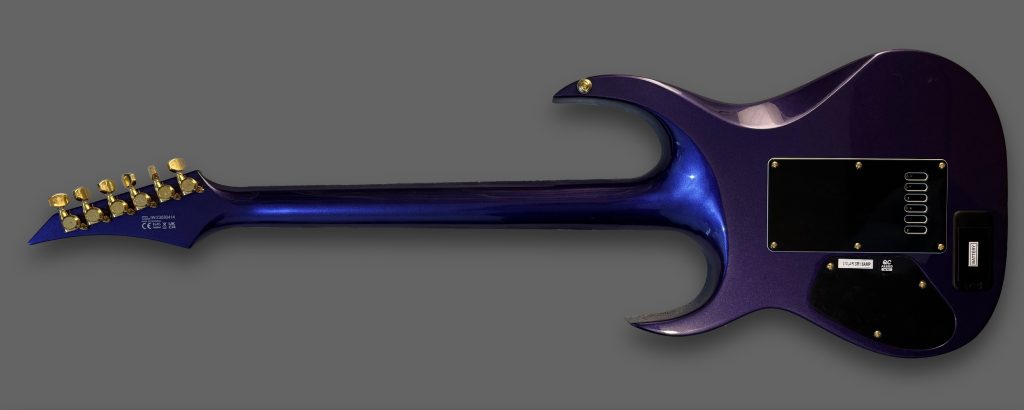
Solar guitars are mostly sold direct online, although some models are available through Thomann, so I figured that it’s worth discussing the purchasing experience. I got this particular guitar from Solar’s Outlet store, which sells factory seconds, production samples, and instruments which have previously been used in marketing/promotion. Mine was one of the latter; firstly because I figured that if it was used for promotion it would probably be a good one, and secondly because it was on a pretty steep discount as part of a sale. These marketing samples have the perk of coming with a photo of the guitar signed by the company’s owner, so I duly also received an envelope containing two autographed photos of the SBR1.6HCLG which, while admittedly a very handsome instrument, is a completely different model.
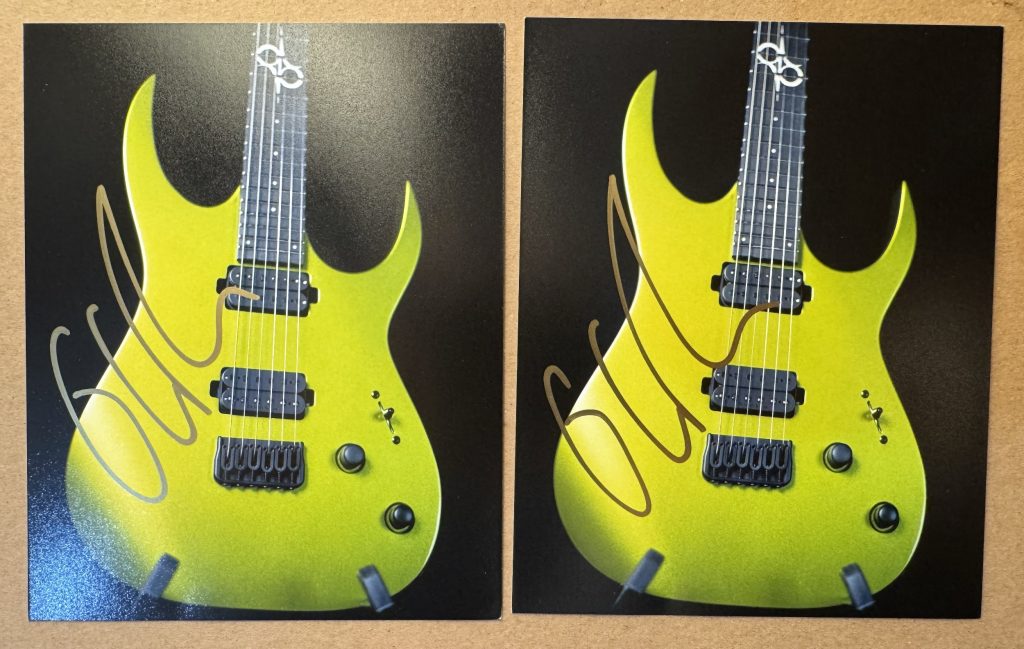
I don’t think Solar do any extra set-up for these ex-marketing sample instruments prior to shipping them; mine arrived in drop-D tuning, which is admirably to the point for a metal-oriented guitar but would probably be confusing to somebody who doesn’t know how to set up an Evertune system.
In any case, the online store is easy to use and the instrument was delivered within 3 working days. The guitar was well packed and undamaged and arrived in a box, inside another box, sealed with some of the biggest and toughest staples I’ve ever seen. Solar doesn’t offer a gig bag for their A- and S-type guitars, although the E and X types come with one; hard cases are available and they’ll ship the guitar in the case if you buy it at the same time. Solar will also sell you fitted “chug dampers” which reduce unwanted string resonance behind the nut, but only when simultaneously buying a guitar; so it’s a good idea to stock up if you need one.
Initial impressions were good; this is a nice-looking guitar (from a certain point of view). The finish was absolutely fine with no major flaws, with the single exception that the back of the neck is finished in gloss. This is a bit of a shame as the satin-finished Solars have a very nice soft and smooth feel to the neck, but this isn’t a dealbreaker. The neck itself is a slim c-shape very reminiscent of an Ibanez. The fretboard is a nice piece of ebony, and the SR model is fairly unique in having a full set of position markers. Some people say they don’t use fretboard markers and rely on the side dots (which are luminlay in this case). I do use them, so this was a major positive for me. The frets are stainless steel and well installed with no sharp edges and no obvious differences in height. The SR model has Solar’s “reverse-reverse” headstock, which is to say it’s the normal way round. I personally think Solar’s headstock looks better reversed, but this is honestly fine, and with an Evertune bridge it really doesn’t make any difference to the playing feel. The nut is plastic, which is a little disappointing, but it’s cut perfectly competently.
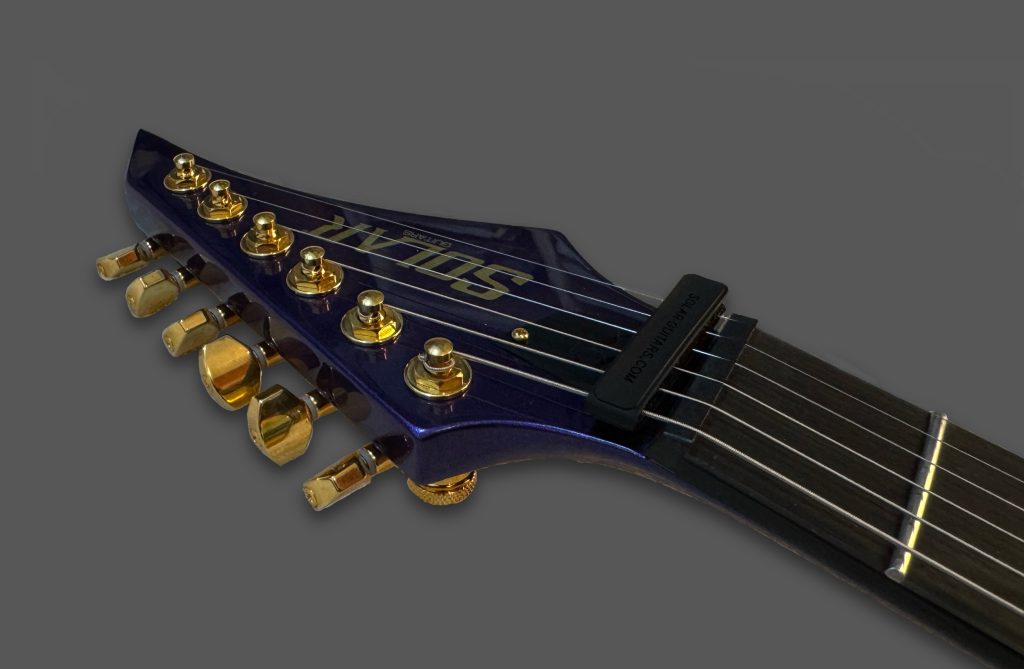
At the body end, the first really noticeable thing is that, due to the set-through construction, the neck heel is basically completely absent. It’s incredibly comfortable, and part of the reason I went for this model over the (frankly even more awesome-looking) bolt-on SBR1.6VC+. The string spacing at the bridge is 10.4 mm with a total width of 52 mm, very slightly narrower than the 54 mm of a lo-pro Edge or the 56 mm of the original Fender bridge. Some people say they dislike this but, in my experience, the main difference is that the top and bottom strings fall off the fretboard less often, which is a net win. One other notable thing about the body is that, due to the positioning of the strap buttons and the contouring, everything feels pushed a little further left than you’d expect with e.g. an Ibanez RG. I got used to this fairly quickly, and it does make it even easier to take advantage of the SBR1.6’s incredibly ergonomic neck joint.
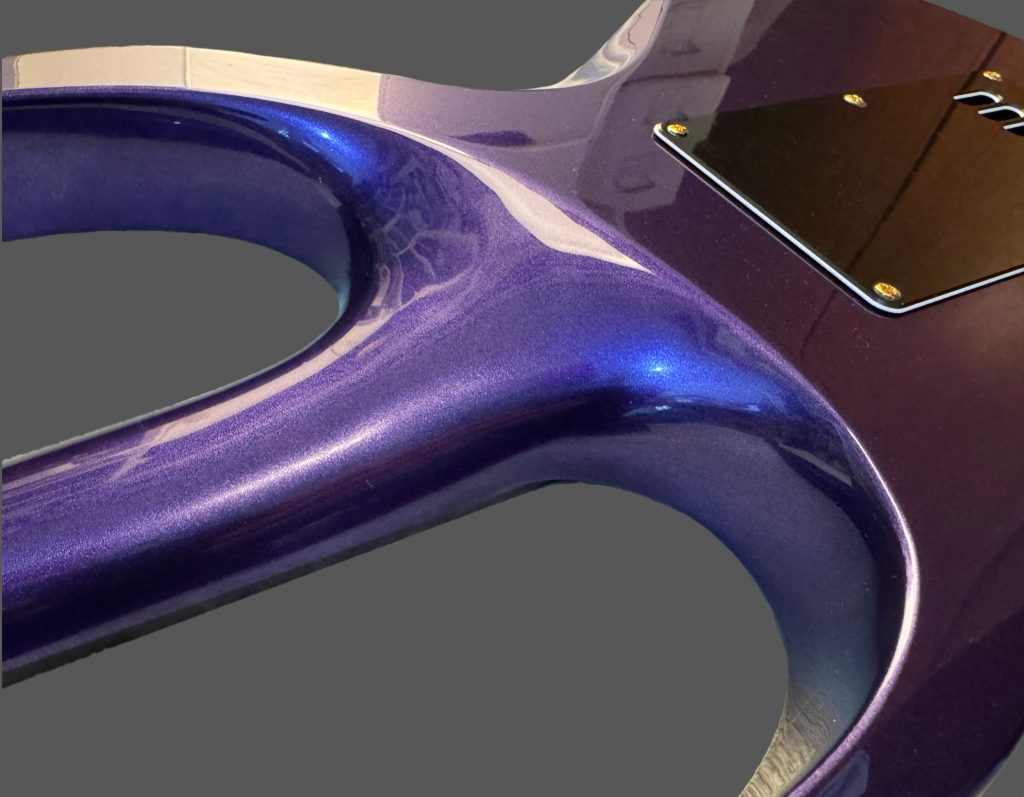
The guitar comes with two Fishman Fluence Modern humbuckers, three way switching, and voicing selection via a push-pull on the tone pot. These are the older model of Fishmans without the third single coil-style voicing, which is a little disappointing and makes the guitar somewhat less versatile, but on the other hand these pickups aren’t exactly cheap so I can’t really blame Solar for clearing out their inventory. I haven’t used Fluence Moderns before; they sound like active pickups without being as blatant about it as an EMG 81.
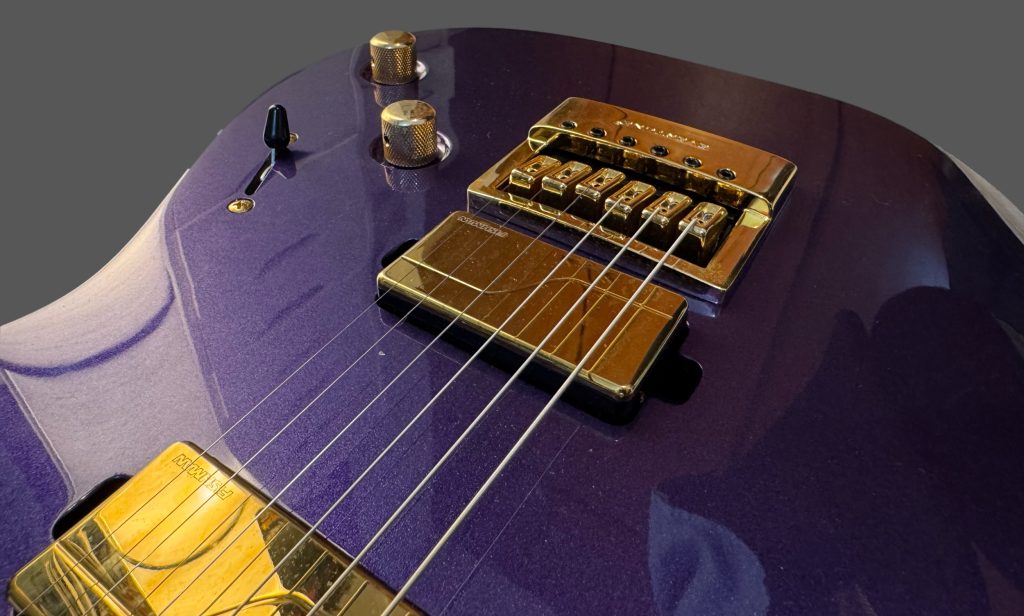
On the whole, I’m very pleased with this guitar. It’s light, well-balanced, and nice to play; much more manageable than my excellent, but absolutely beastly, Solar A1.8. The looks are extremely unsubtle – basically what I imagine what would have happened if Prince had had an Ibanez signature model – but frankly I appreciate the sheer dedication to maximalism. I don’t love the gloss-finished neck but I do love the set-through construction. The tuning stability and intonation are amazing, which I expect will come in very handy for its intended purpose of recording mostly rhythm parts. I haven’t gone into detail about the setup, but the poor thing has just been halfway around the world and passed through three very different climates in a short space of time, so I’m giving the wood a bit more time to settle down before I make final adjustments and decide how well I think it really plays.





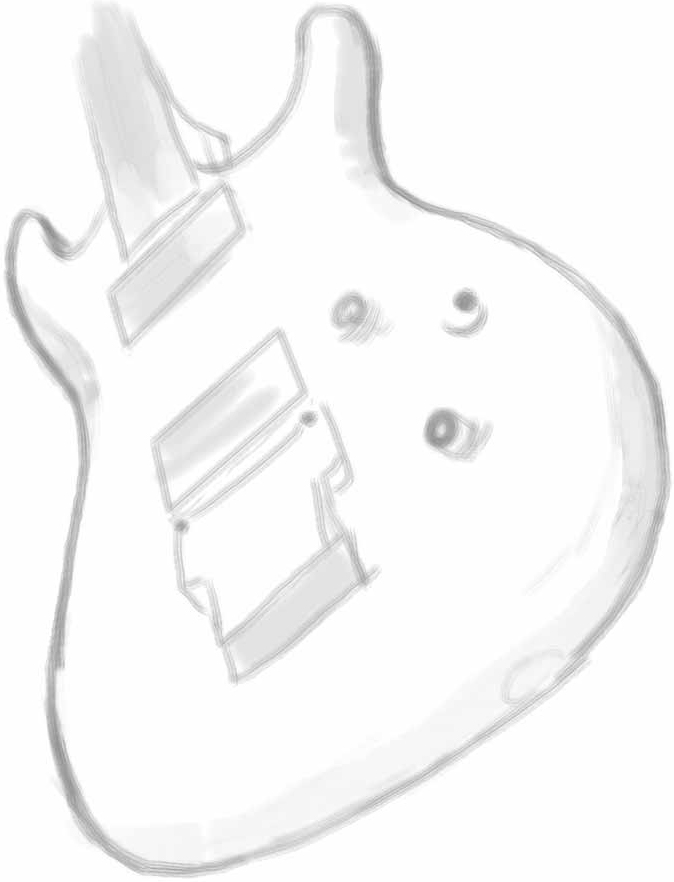
Leave a Reply